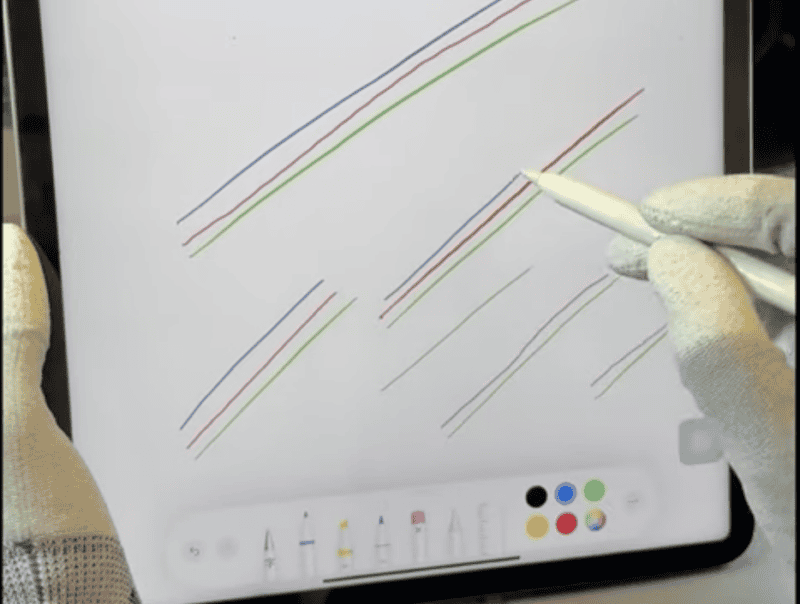The latest part of an Apple device to demand a repair by its maker appears to be the screens on newer iPads. Reports from repair shops and customers suggest that Apple Pencils no longer work properly on non-genuine Apple screens, as they draw squiggly lines on a diagonal instead of straight.
Ricky Panesar, CEO of UK repair firm iCorrect, told Forbes that screens replaced on newer iPad Pros (fifth and sixth-generation 12.9-inch and third and fourth-generation 11-inch models) do not deliver straight lines when an Apple Pencil is used to draw at an angle. “They have a memory chip that sits on the screen that’s programmed to only allow the Pencil functionality to work if the screen is connected to the original logic board,” Panesar told Forbes.
A Reddit post from May 23 from a user reporting “jittery” diagonal lines from an Apple Pencil on a newly replaced iPad mini screen suggests the issue may affect more than just the Pro line of iPads.
Apple continues to suggest, in varying degrees of forcefulness, that it be the only company to repair its customers’ devices. At the least, the company seems to believe that only Apple Genuine Replacement Parts should be used by licensed technicians or—with a suitcase full of tools—individuals. Every other kind of repair is subject to complications by Apple’s tying of parts to individual devices, known as serialization. Batteries, screens, and Touch ID sensors are all subject to display warnings to users or lose some functionality when transplanted outside of Apple’s repair network.
This stance, and the company’s size and influence, makes Apple a primary target of right-to-repair campaigns, as well as legislation in the EU seeking to boost their devices’ interoperability, including USB-C mandates.
This latest complaint by the repair community about screen pairing echoes an issue that arose with the then-new iPhone 13 line in 2021. Repair techs found that replacing the screen, even with a genuine Apple screen with the Face ID module laboriously transferred over (but not paired by Apple’s proprietary software), would disable Face ID on the device. Apple later told The Verge that it would “release a software update” to fix the issue without detailing whether it was a bug or an intentional design choice.
Ars contacted Apple for comment and will update this article if we receive a response.

